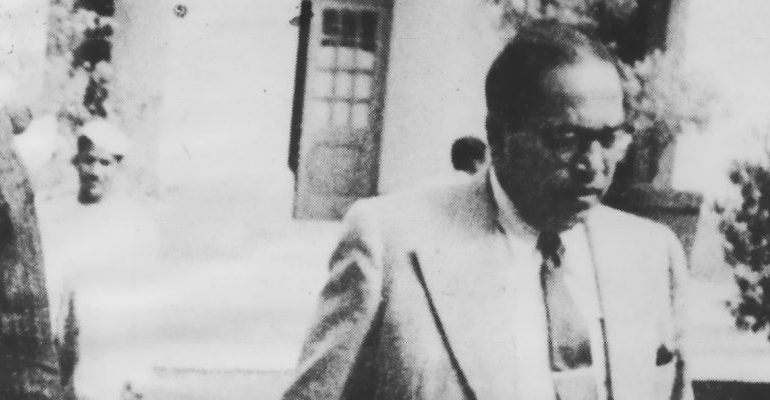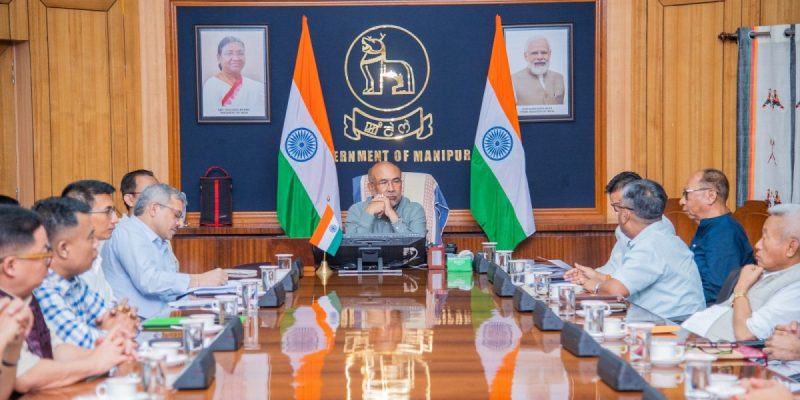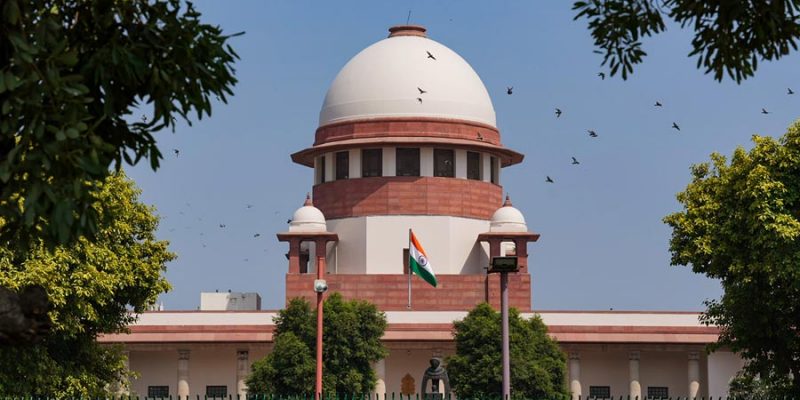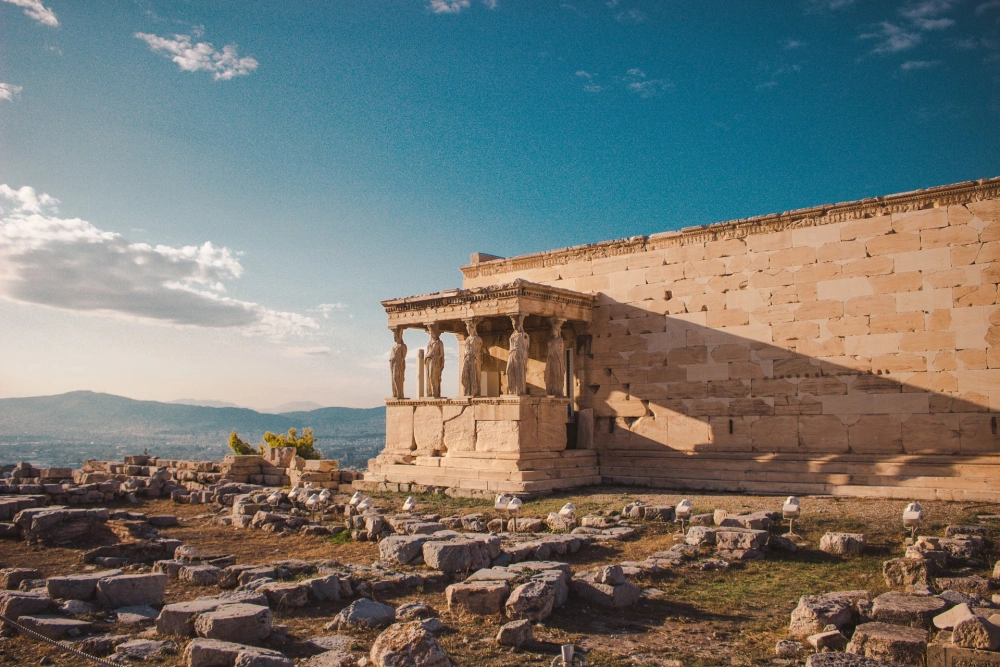How Ambedkar Bridged the Gap Between Religious Identity and Western Modernity Through Buddhism

Dusshera is an important festival for the Buddhists in India for a distinct reason. On October 14, 1956, (Dusshera fell on this date that year) Babasaheb Ambedkar along with his six lakh followers embraced Buddhism and initiated a new era of religious revolution.
Every year, on Dusshera, lakhs of neo-Buddhists assemble at Nagpur’s Deekshabhoomi to commemorate the historic ‘Dhamma Chakra Pravartan’ day and celebrate their newly adorned identity.
Within the realm of social studies, Ambedkar’s decision to adopt Buddhism is often relegated as his desperate act to create a new minority religion for the marginalised social groups. This is a petty and cursory remark as Ambedkar’s act for religious conversion created a bridging dialogue between modernity and tradition and suggested why substantive ethical foundations are a prerequisite to building a new society.
It is popular to characterise Ambedkar as a modern liberal thinker as he has often endorsed the western ideals to visualise India’s future. His drafting of the newly independent nation’s constitution is often understood as his validation to modern progressive values and its normative goals. India’s federal structure, parliamentary democracy, the infallible powers of the judiciary, university education, etc., supplement the idea that India is an integral part of the western model of development and may progress similar to the advances made by the European nations.
Though Ambedkar admired the emancipatory values of the modern liberal project, he was not convinced that it has ample capacity to transform the Indian social order radically. Interestingly, such critical realisation did not influence Ambedkar to adopt the Marxist militant alternative to bring social and political change. Instead, he looked into India’s ancient philosophical traditions and suggested that the revival of Buddhism would humanise the current social order better and make it compatible to modernist changes.

Ambedkar delivering speech during conversion, Nagpur, October 14, 1956. Photo: Wikimedia Commons
Western modernity and the ideals of Indian nationalism
Ambedkar equally understood that the ideals of nationalism in India are not based on secular values but are constructed around ancient Hindu civilisational ethos. The arrival of Gandhi in the national independence movement as a maverick leader also paved the crucial entry to the Hindu religious ideas, rituals, and symbols to mobilise the common masses. Under his leadership, it was questioned how western modernity could build an indigenous resistance based on the values that are integral to Hindu traditions.
The right-wing cultural nationalism is also cultivated on a similar premise, with an extra layer of patriarchal force and xenophobic tendencies. Between Gandhi’s nationalism based on communal harmony and Savarkar’s majoritarian Hindutva nationalism, there is a visible difference. However, both were convinced that India’s national identity must be based upon certain Hindu cultural idioms.
Ambedkar noticed that the Hindu identity, its political ideology, and the ancient cultural motifs are integral characteristics of Indian nationalism. Though this is a powerful imagination, Ambedkar experienced that the socially marginalised communities, especially the Dalits, feel alienated and depressed in such ‘Brahmanical’ cultural milieu.
Within the Hindu caste matrix, the people belonging to the Dalit community are not seen as equal beings but are condemned as “impure bodies”, forced to suffer a precarious life cycle of poverty, exclusion, and violence. He explained that the Hindus are afflicted by the caste system that often prevents them from organising based on the values of fraternity and equality.
Nationalism based on Hindu religious symbols creates a powerful political rhetoric of unity. Nevertheless, Ambedkar often questioned its capacity to challenge the Brahmanical hegemony and transform the oppressive social relationships.
Distinct from the cultural nationalism project that forcefully includes the Dalits as integral to Hindu unity, without altering the social hierarchies, the modern state promises equal treatment to its citizens and exclusive opportunities and protections to emancipate the worst-off social groups. Ambedkar diagnosed that the Hindu “untouchable” identity is depressing and hardly incites confidence; instead, it discourages the Dalit community to participate in modern secular spaces with a robust feeling of individuality.
Though the state promises them protections and safeguards, in the general public life, the Dalit community has to face brutal Brahmanical gaze that disallows a person to perform as a right-bearing equal citizen. Ambedkar pondered for decades to find a solution to this perpetual embargo. Mass conversion to Buddhism emerged as a revolutionary solution to such a puzzle.
A revolutionary solution
Ambedkar embraced Buddhism so that the Dalits can enjoy the profits of modern development with confidence and a heightened sense of equality. Rejection of Hinduism also means rejection of the depressing social psychology that was forced upon the Dalits.
Instead, Ambedkar offered them a convincing historic legend that the Dalits were the ruling elites in the ancient past and only after getting defeated by the cunning and treacherous Brahmanical conspiracy, they were forced into servility and later marked as the “untouchables”.
Therefore, adopting the neo-Buddhist identity is not just a conversion ploy to create a minority religion but it is the reclamation of the Dalit community’s glorious past, its intellectual legacies, and the lost ethical vision.
Second, distinct from the Brahmanical social ideology, which is antithetical to the modern egalitarian virtues, Ambedkar thought that the teachings of Buddha would supplement the liberal democratic ideals. He believed that for India’s better future, a rapid modernisation of the social and economic spheres is a must. In order to enjoy the benefits of capitalist development and democracy, an individual shall be free from the social compartments and have the ability to enter into the modern realm as a thinking and rational being.
He observed that the belief in caste identity hampers such individuality and disturbs the possibility of a fraternal milieu. He hoped that Buddhism will help an individual to escape the caste fixity and motivate them to enjoy the benefits of modernity as a free intellectual being.
Third, with Buddhism, Ambedkar also revitalised India’s cultural past and made it relevant in the modern times. Contrary to the Left-Marxist’s anathema towards the application of religion in modern times, Ambedkar looked at religion as a necessary moral component that provides meaning to human existence. However, he also remained critical towards the right-wing’s usage of religion in the political processes. He suggested that the religious teachings shall compliment the modern ethics of liberty, equality, and fraternity and found that the Hindu political ideology is hate-based, cherishes the Brahmanical cultural values, and is non-committal towards the annihilation of the oppressive caste system.
According to Ambedkar, Buddhism, in contrast, upholds humanism, individual freedom, and a peaceful coexistence, and therefore, is suitable for the modern times.
Ambedkar recognised that religious identity is crucial for creating ethical social and political affairs as humans are historically embedded into such phenomena. On the other hand, western modernity belittles human association with religious rituals or their spiritual quests. It seeks to establish an individual-centric secular polity.
Ambedkar bridged this gap between the two worlds.
With his historic conversion to Buddhism, Ambedkar offered that religious teachings can help the individual to participate in the modern realm as a competent moral individual, motivated to build a social order sans discrimination and prejudices. The Buddhist history and thoughts are equally suited for the modern times and would help the new nation to build its citadel on the ancient ethical foundation.
The maverick arrival of the neo-Buddhist community in Maharashtra as a powerful political and intellectual group and its robust presence in the middle-class domain today offers a glimpse that Ambedkar was accurate about his prediction. However, on the flip side, Ambedkar’s Buddhist mission was restricted to particular regions and did not emerge as a capable force to challenge the Hindutva hegemony.
Instead, the right-wing ideological assertions and cultural strategies influenced the socially deprived masses and integrated them into its communal rhetoric.
Importantly, with the rise of Hindutva-based communal identity, the caste-based deprived social identities have not dried away, instead they have gained a new currency while retaining the power and authority of the conventional social elites.
Though Ambedkar envisaged that the Dalit-Bahujan groups would utilise the ancient religious resources to counter the Brahmanical cultural hegemony effectively, it is the conventional social elites who have instrumentalised the Hindu religious and cultural symbols more effectively, including the appropriation of neo-Buddhism than the others.
It established its permanency in the democratic discourse. Therefore, it is crucial to revisit Ambedkar’s ideological and ethical values in such troubled times and to re-establish its relevance in transforming the corrupt social order on the basis of liberty, equality, and fraternity.
Harish S. Wankhede is Assistant Professor, Center for Political Studies, School of Social Sciences, Jawaharlal Nehru University, New Delhi.







